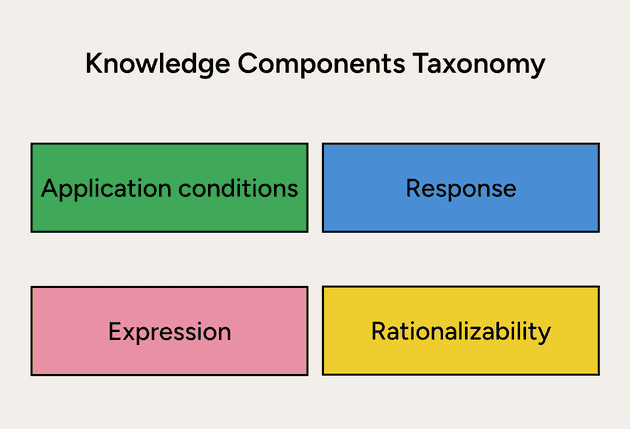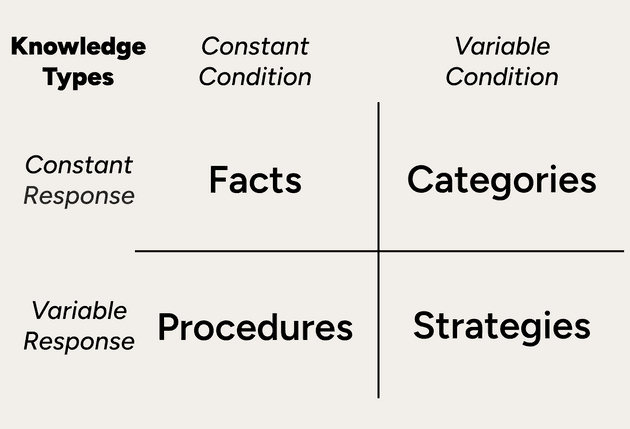Knowledge Components Taxonomy: Knowledge can be categorized by four key features: constant or variable application conditions, constant or variable responses, verbal or non-verbal expression, and rationalized or memorized understanding.
We know that not all knowledge is equal, but how can we categorize knowledge in a way that helps us learn it?
The KLI framework identifies four distinctions:
Application conditions: Constant (always the same cue) or variable (cue changes by situation). This refers to when knowledge applies.
The Chinese word "月" always means "moon" (constant). Choosing the English word "the" or "a" depends on context (variable).
Response: Constant (same answer every time) or variable (answer changes). This refers to what the learner produces.
"What's Earth's gravity?" Always 9.8 m/s² (constant). Pluralizing rules depend on the word (variable). For example, "city" to "cities" ("y" to "ies.") and "cat" to "cats".
Expression: Verbal (can be stated in words) or non-verbal (shown through action). This distinguishes how knowledge is expressed.
You can say the circle area formula (verbal). You can balance on a bike but struggle to explain how (non-verbal).
Rationalizability: Can be logically understood or must be memorized. This refers to the extent to which knowledge can be rationalized.
Why we pluralize certain ways has phonological reasons (rationalized). Why "H" means hydrogen is just a convention (memorized).
These distinctions provide a framework for categorizing knowledge. For example, combining the first two distinctions (Application conditions-Response):
- Constant condition, constant response: Facts like "9.8 m/s²" or "Paris is the capital of France"
- Variable condition, constant response: Categories like "small volumes use milliliters"
- Constant condition, variable response: Procedures like "given circle radius, calculate its area with formula"
- Variable condition, variable response: Strategies like "to find the area of irregular shapes, decompose them into regular shapes, and sum"
Complexity increases from constant-constant facts to variable-variable strategies and different knowledge types need different teaching. This taxonomy provides a systematic language to discuss these differences and identify the most effective way to acquire a specific type of knowledge.

